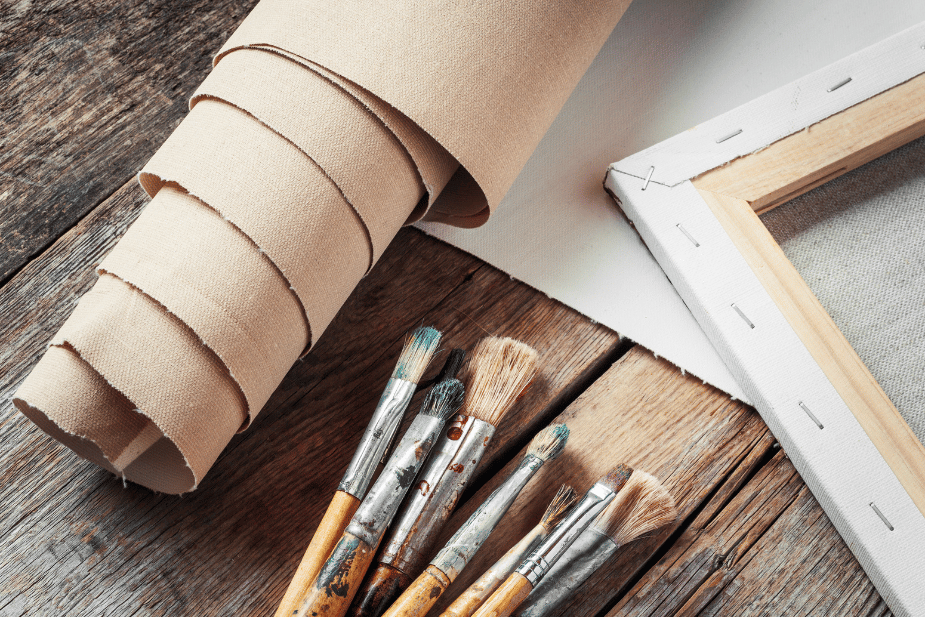
The Complete Guide to Easels
Find the right tool for your art
Whether you're a beginner or a professional artist, a good easel is one of the most important tools in your studio. It lifts the canvas to the right working height, improves your ergonomics and allows you to paint more freely and precisely. But with so many types of easels on the market, how do you choose the right one?
In this guide, we'll go through the main types of easels, their pros and cons, and what to look out for before you buy.
What is an easel?
An easel is a frame-shaped holder used to support canvases while working or exhibiting. They come in different sizes, materials and functionality depending on your needs and work environment.

The 5 most common types of easels
1. H-Easel(Studio easel)
- Stability: Very high
- Use: For large canvases and longer painting sessions
- Pros: Adjustable height and angle, often with wheels and storage tray
- Cons: Requires good floor space
Perfect for: Studio environments, acrylic and oil painting.
2. A easel(Triangular easel)
- Stability: Good
- Usage: Medium to large canvases
- Pros: Space-saving, easy to fold up
- Cons: Less stable for very large canvases
Perfect for: Studios with less space, students and semi-mobile setups.
3. Table easel
- Stability: Varies, but good for small canvases
- Use: Smaller formats, ideal for hobby or detailed work
- Pros: Compact, can be used on tabletop
- Cons: Limited canvas size
Perfect for: Watercolor, drawing, kids, or small acrylic projects.
4. Travel easel / Field easel
- Stability: Lightweight but slightly unstable, not recommended for indoor use.
- Use: Outdoor work (plein air)
- Pros: Lightweight, foldable, easy to transport
- Cons: Not suitable for large canvases or windy weather, not good for wooden floor.
Perfect for: Nature painting, traveling and sketching.

What should you consider before buying?
- Space: Where do you need the easel? Do you have floor space or just table space?
- Mobility: Does it need to be easily moved or transported?
- Paint type: Do you work with heavy media like oil or lighter ones like watercolor?
- Canvas size: Your easel should be able to handle the largest format you plan to paint on.
- Budget: Good easels come in many price ranges - choose based on need, not just price.
Easel maintenance:
- Clean paint residue and dust regularly
- Lubricate moving parts with a little oil, especially on wooden easels
- Store in a dry place to avoid moisture damage to wood or rust on metal
- Check screws and fittings, especially on portable models
Tips from the workshop:
- Use a floor mat under the easel, especially if painting with acrylics or oils
- Secure the canvas with extra tension if you're painting with a lot of pressure
- An easel can also be used to hold reference pictures or sketches
- Some easels have built-in trays for brushes and colors - handy!

Quick overview: Which easel is right for you?
|
Level / Need |
Recommended type |
|
Beginner |
A easel or table easel |
|
Professional |
H easel |
|
Outdoor painter |
Travel easel/ Field easel |
|
Small space/budget |
A-Easel |
|
Kids/school use |
Table easel |
Conclusion:
An easel isn't just a holder - it's a workstation. Choosing the right easel can make a huge difference to your comfort, technique and results. With the right easel, you can concentrate on what matters most: creating art.



